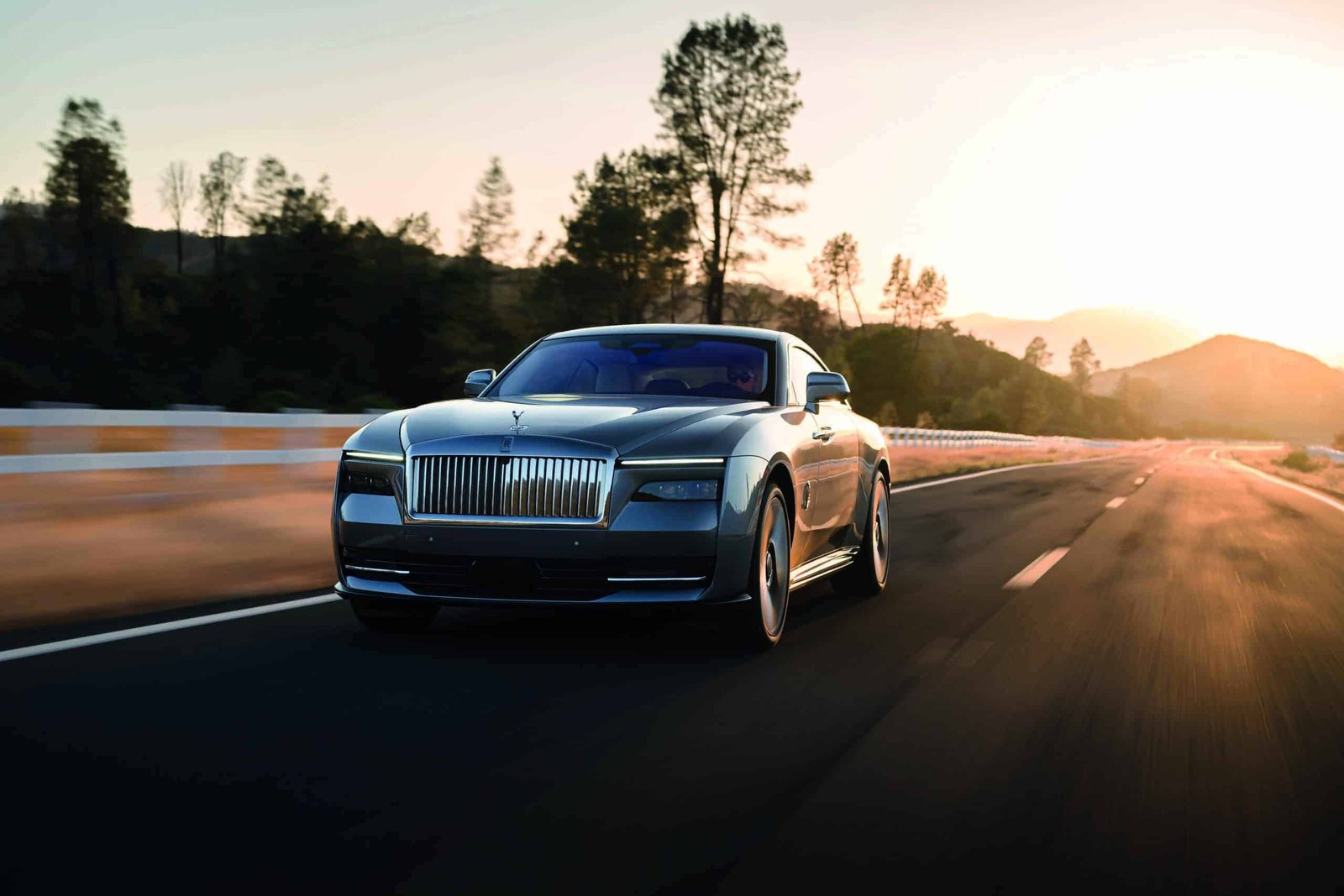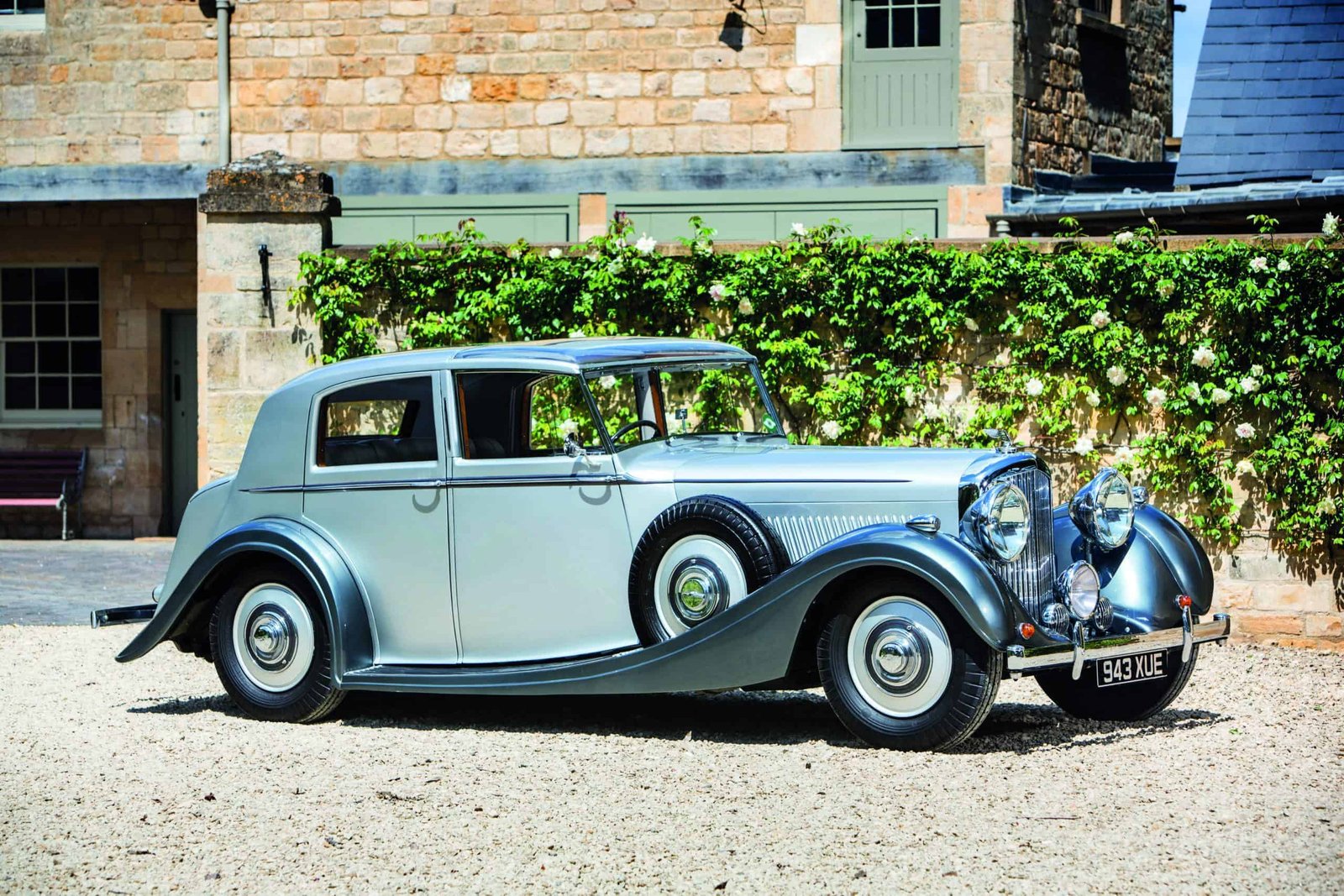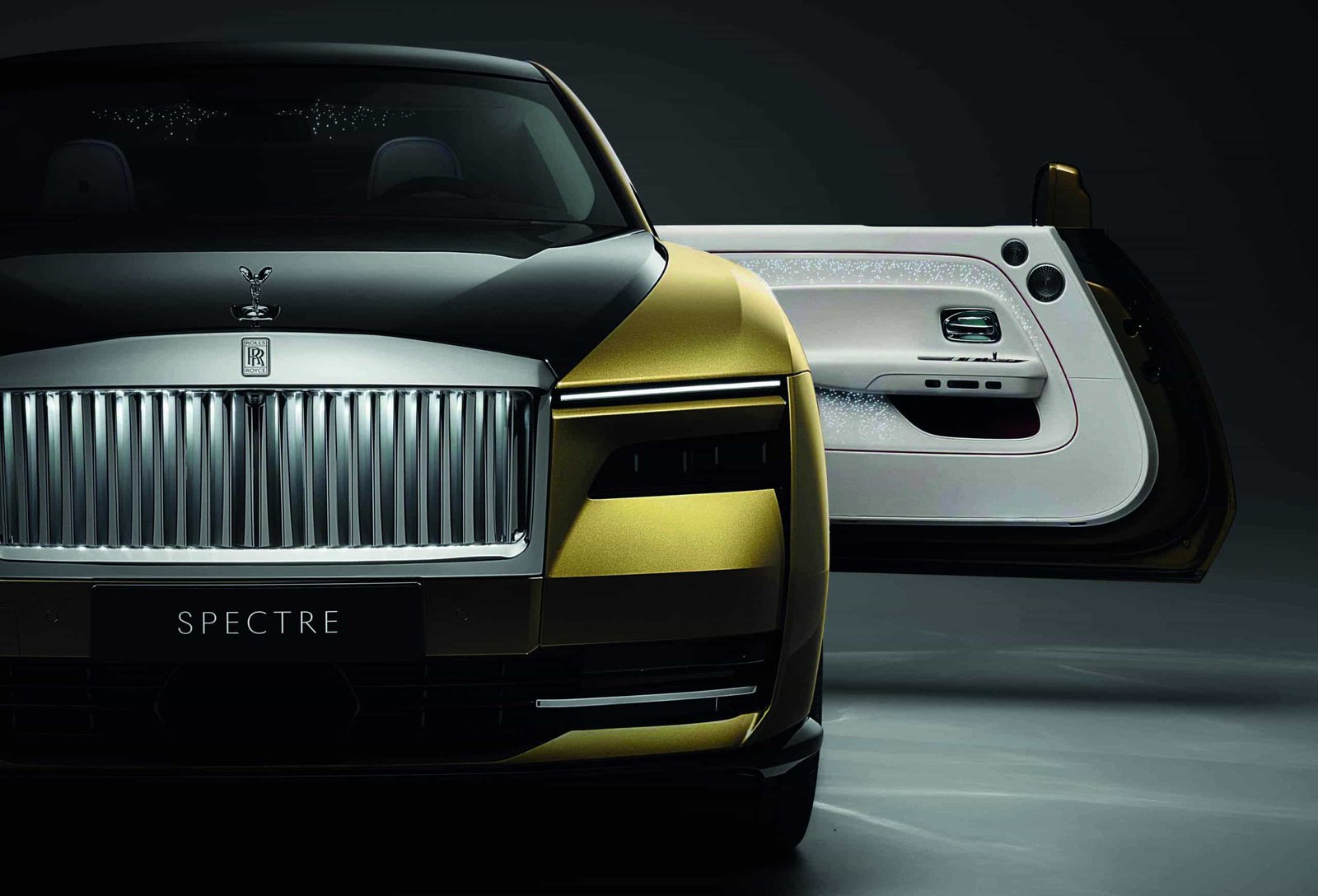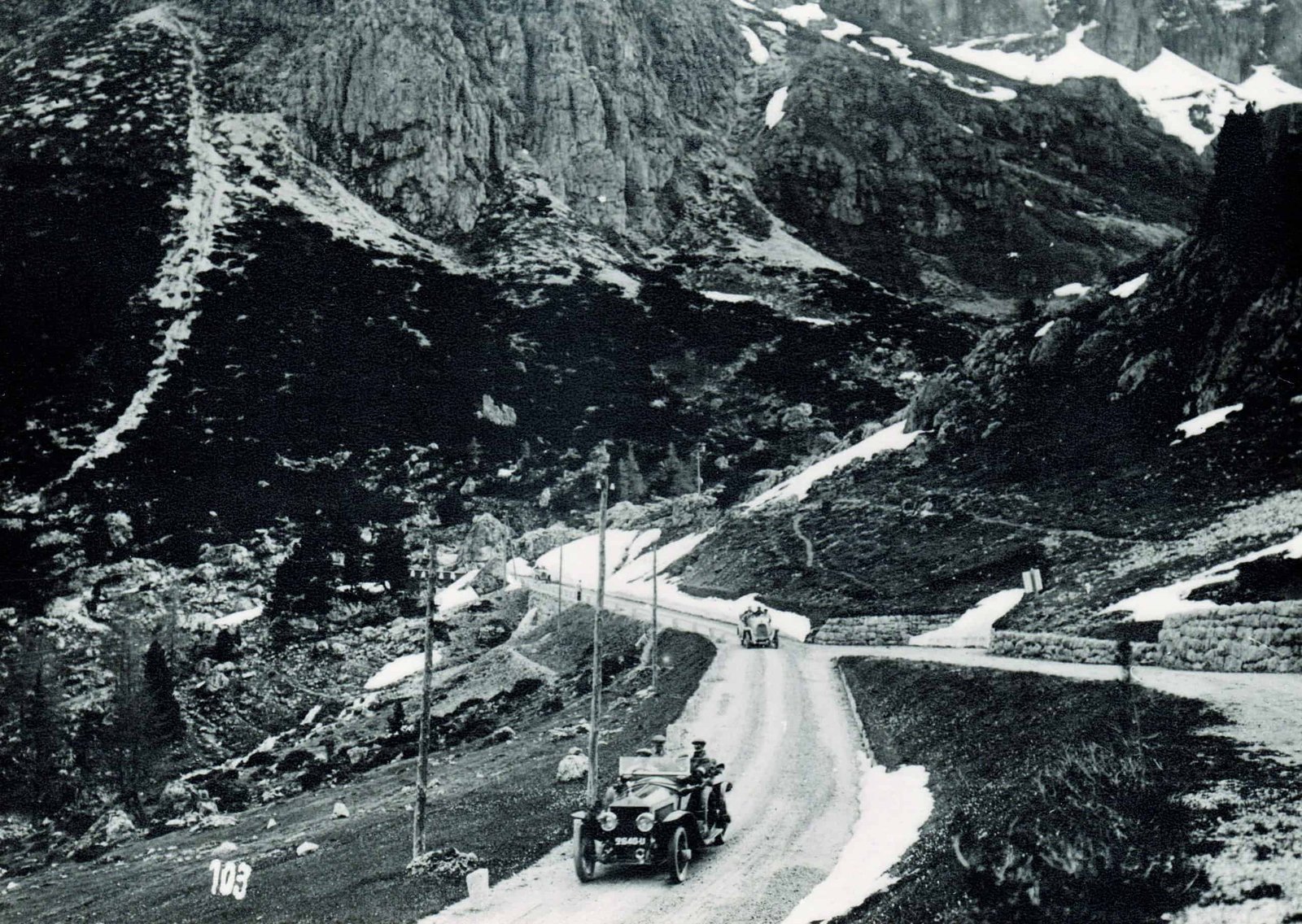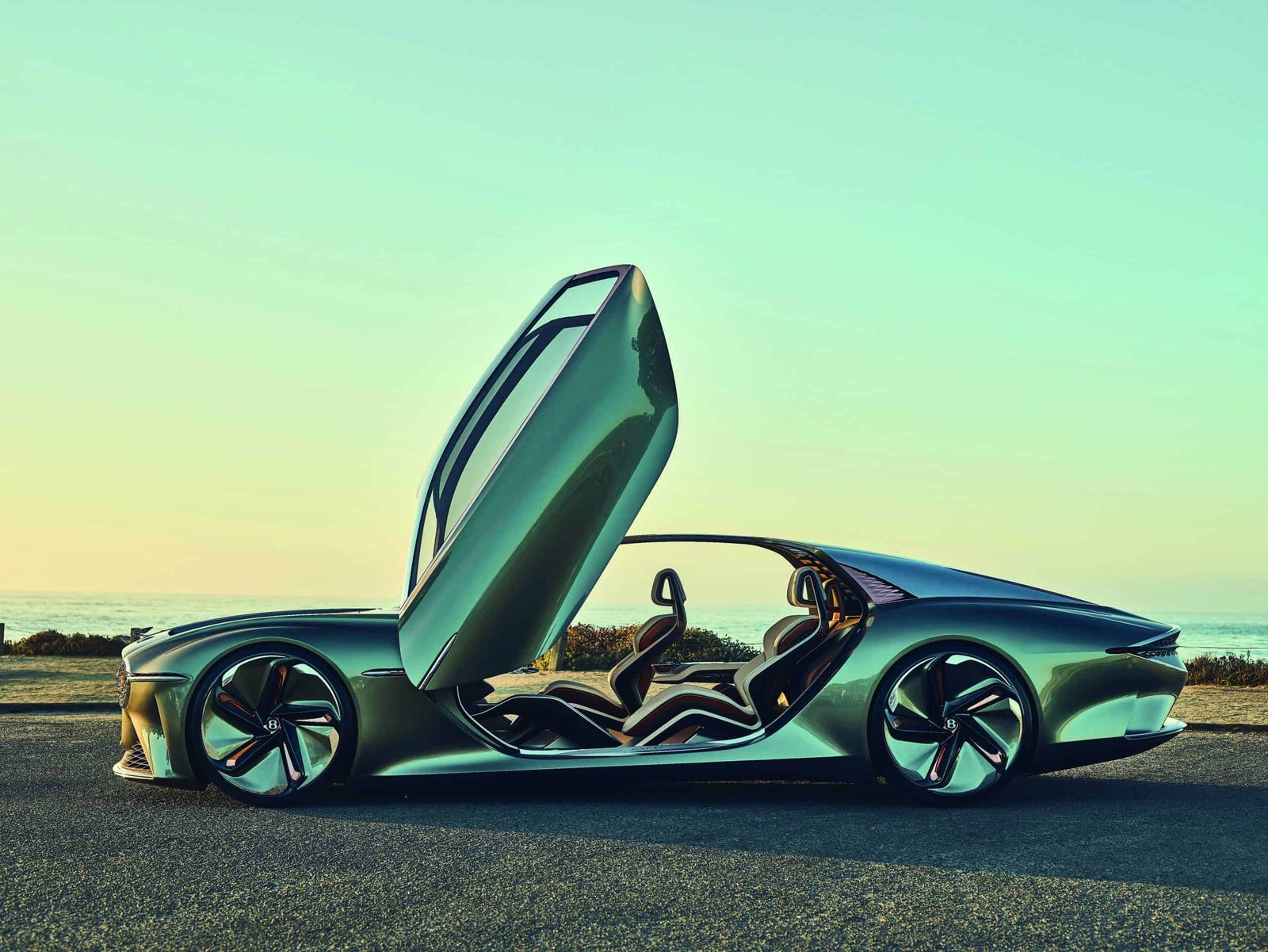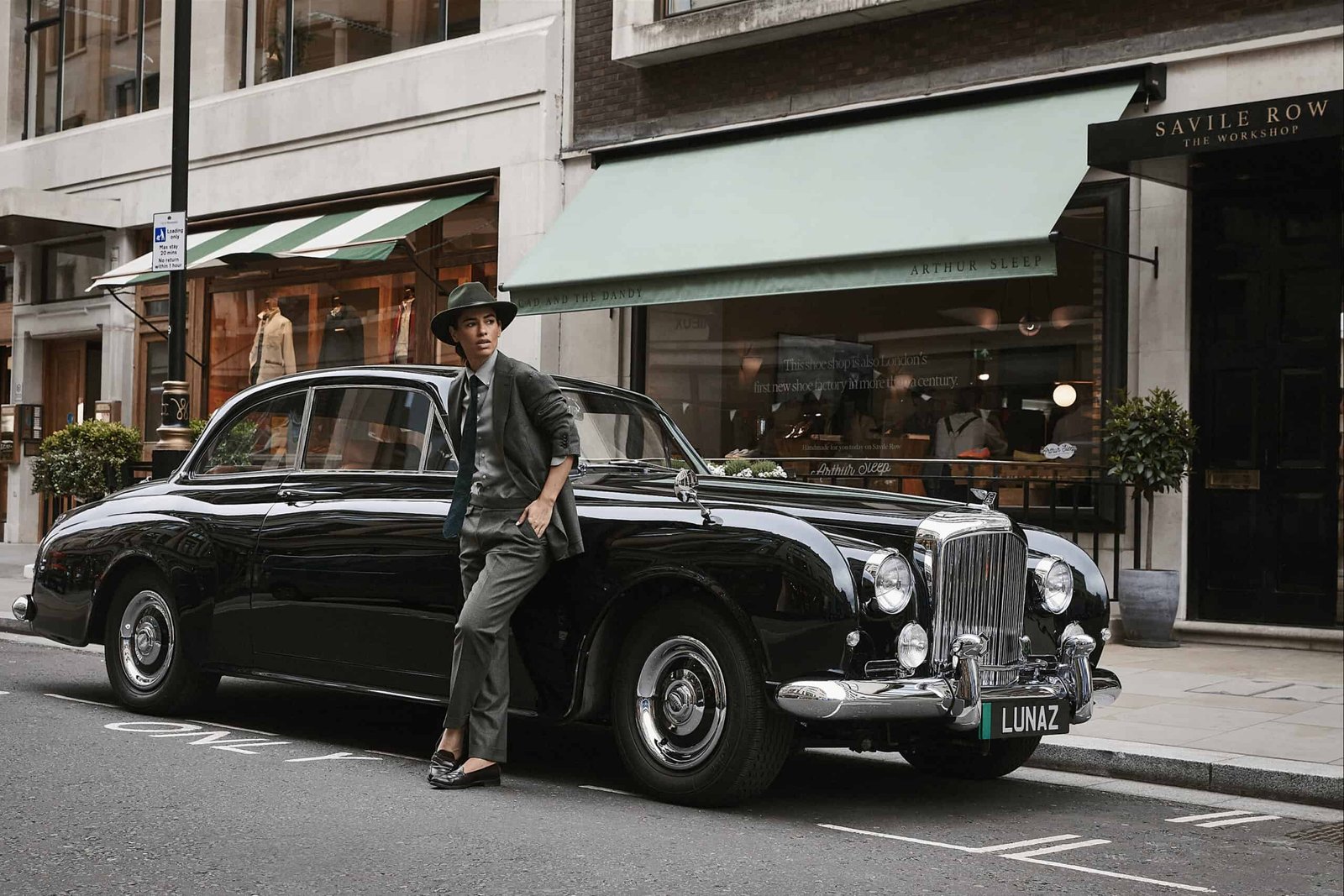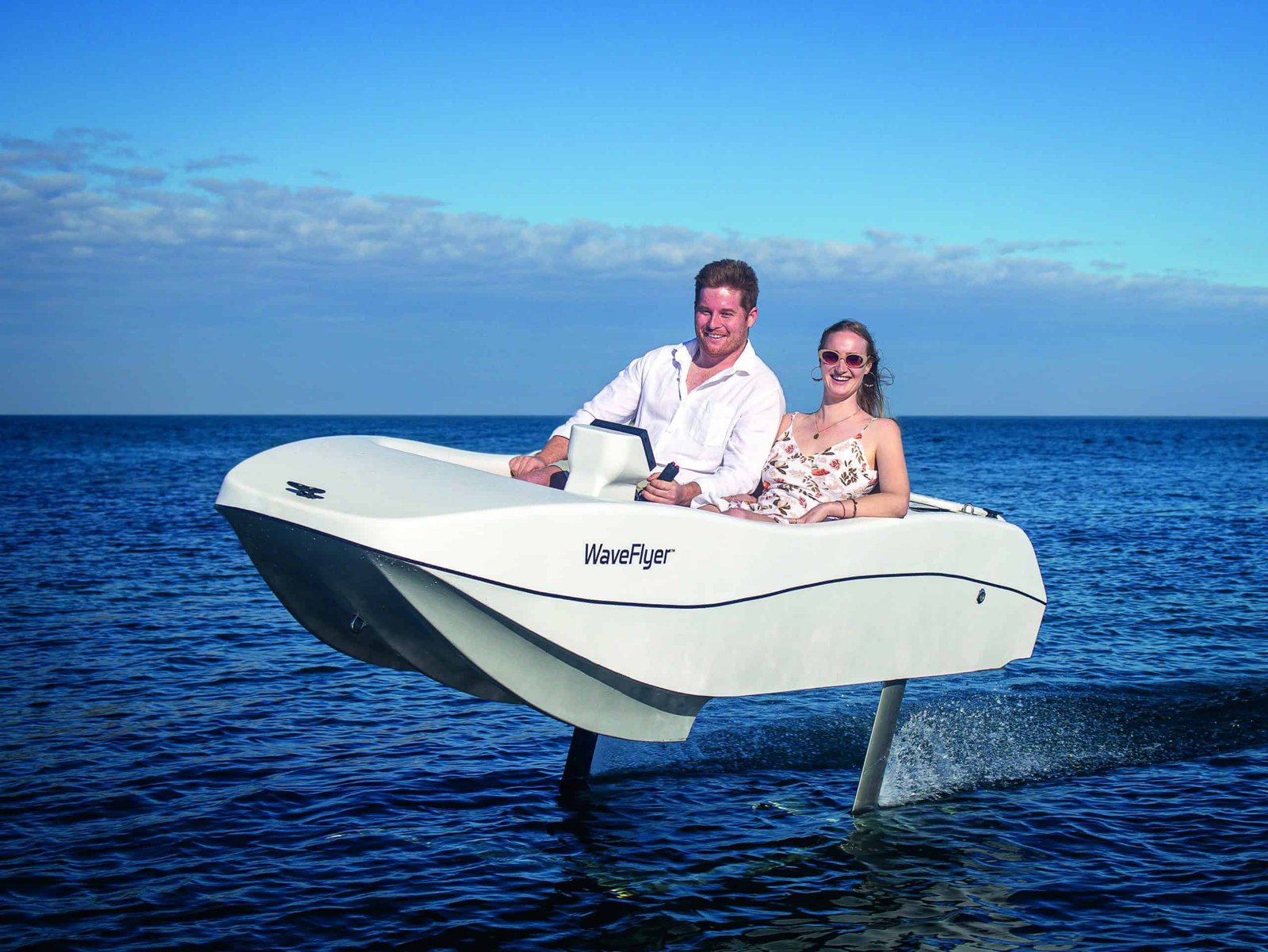WaveFlyer’s all-electric hydrofoil two-seater, Volaré, flies above the water for a joyously high-performing yet environmentally responsible ride
Like many Australians, Dr Michael Andrewartha loves the sea. It is such an integral element of the Australian lifestyle that he was determined to protect the oceanic world he so admired. That opportunity came through the WaveFlyer Volaré, a pioneering electric hydrofoil watercraft that emerged from research at the University of Western Australia in collaboration with Electro Nautic, the company that naval architect Michael co-founded in 2019 in Perth. The groundbreaking vessel is striking, unique and exciting. It can sit two people side by side and has a battery capacity of more than four hours.

“Our initial market is luxury recreational owners and rental fleets,” says Michael. “We believe our cutting-edge technology and sustainable approach will bring a new excitement and environmental responsibility to the watercraft rental industry.” As believers in the circular economy, the team is creating a sustainable product, considering all aspects including the economies of the regions it wishes to operate in. “We want to promote the growth of local manufacturing to stimulate these areas,” he says. “The more people we can get into electric vehicles, the less we will pollute our oceans.”
The Volaré was originally created as a single-person vehicle but underwent an evolution. The team at Electro Nautic engaged with customers who expressed the significance of a shared experience. Taking their feedback into account, the designers modified the design to accommodate two individuals side by side and integrated elements of drone technology to deliver a seamless and wakeless ride. Taking inspiration from electric vehicle technology, Electro Nautic introduced software updates and remote-monitoring capability allowing owners or renters to optimise performance and keep the vessels within safe waters. The hydrofoil engages at seven knots; optimum cruising speed is 12 knots and top speed is electronically limited to 22 knots. With a range of 100 kilometres, owners can safely explore the beauty of the ocean in complete peace and security.
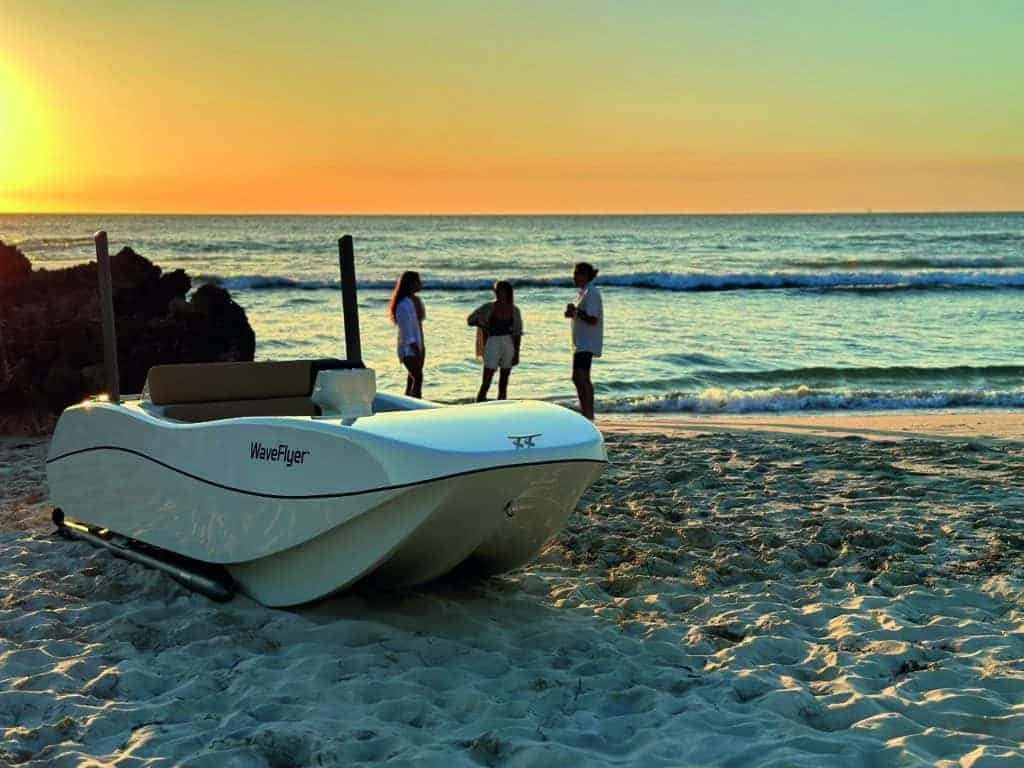
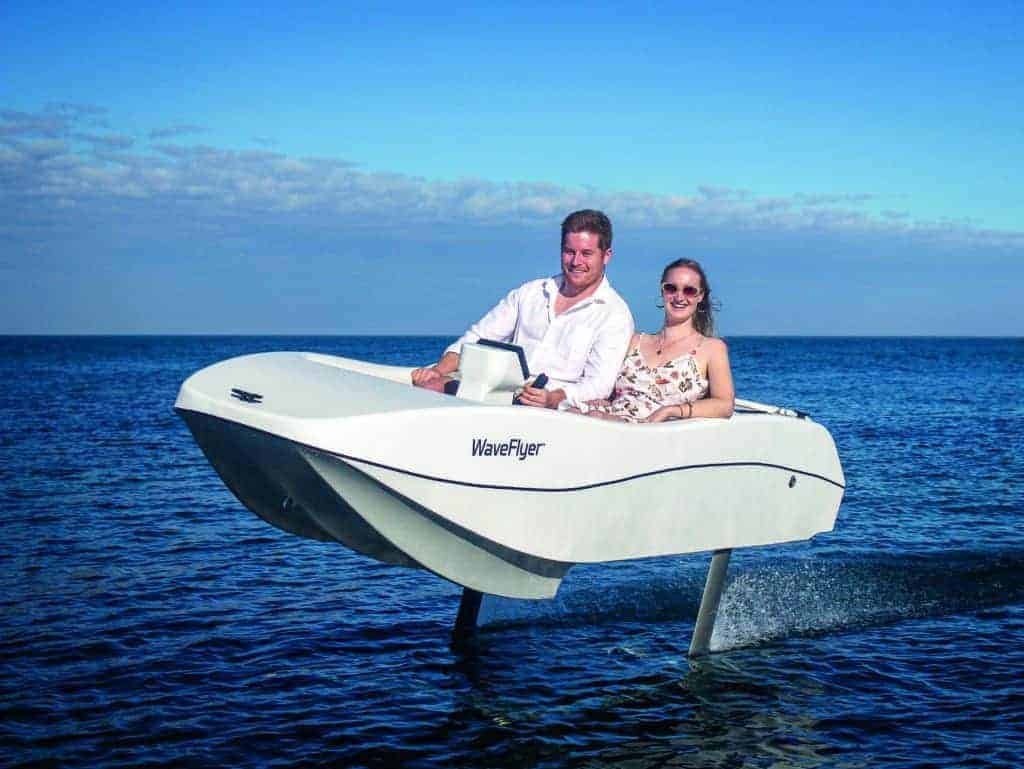
“The foils can retract and the hull becomes a ‘planing’ hull, so you can go over reefs and onto beaches with turn-on-the-spot manoeuvrability,” says Michael. “We wanted to make something cool but very practical. You can explore inland waterways with a vehicle that is so easy to use it’s like a self-driving car. You can put it in cruise mode and speed around, then pull the foils up and bring it onto a beach for a picnic and a glass of champagne. Then you can go a bit wilder, putting it into performance mode. We want customers to feel comfortable enough to start pushing the boundaries of what it can do.”
The Volaré is already in operation in Australia, with commercial orders for rental fleets on east and west coasts of the country. Europe and the United States have shown considerable interest in the environmentally sustainable technology. “Traditional marine vehicles are noisy and polluting,” says Michael. “They damage the environment and waterways.”
From reducing marine pollution to using recycled materials in production, Electro Nautic is committed to supporting the UN’s Sustainable Development Goals. “We are proud to showcase our Australian innovation to the world and demonstrate what can be achieved with determination, perseverance and a vision for a sustainable future,” says Michael. “We hope our passion comes through in the way we interact with our customers. We want them to feel they are part of a community of like-minded individuals who are using exciting technology to protect the oceans for themselves and for future generations.”
www.electronautic.com.au



